This site contains affiliate links. As an Amazon Associate, I earn a commission from qualifying purchases at no extra cost to you. Full Disclosure Here.
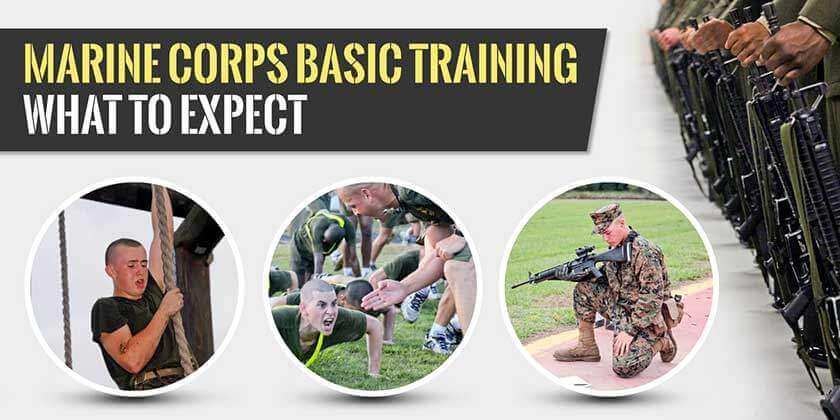
I remember the moment my recruiter told me I was shipping off to Parris Island for Boot Camp in 2 weeks.
I whipped out my iPhone, tapped the Safari App, went straight to google and typed in “Parris Island.”
The first search result that popped up was an article by urbandictionary.com.
I clicked it, thinking I would get a short description of the island and a summary of its historical importance.
That was not the case.
My heart sank… Under the heading Parris Island, it read, “Absolute hell on earth. Recruits live here for the longest 3 months of their lives, getting beat, …” I closed the App.
I entered a state of denial. I was thinking, I’m in my early 20s, I have a college degree, and I’m in phenomenal shape.
Psssh, people are just dramatic, I’ll probably breeze through training and get some awards for being such a stud.
That also was not the case.
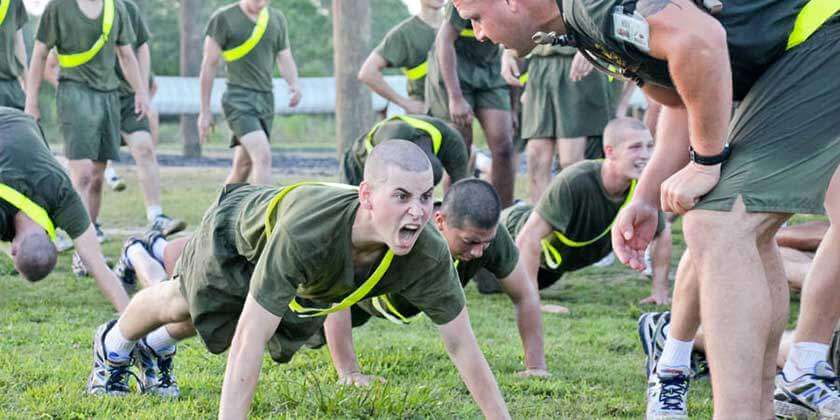
The truth is it’s impossible to be fully prepared for Marine Corps Basic Training. I don’t care how much you run or train beforehand, it truly sucks for everyone.
It’s not so much that it’s physically tough, although at times it is, but you certainly don’t need to be a physical specimen to make it through.
The reason Marine Corps boot camp has the reputation it does is due to the sheer amount the misery that the Drill Instructors ensure each recruit endures.
You see, Drill Instructors are usually some of the best Marines, they put a lot of work into the Corps, and they’re hand-picked to train the next wave of Marines. A lot of them are combat vets, they’ve lost friends, and on top of all that, they got their asses kicked when they had to go through Basic Training.
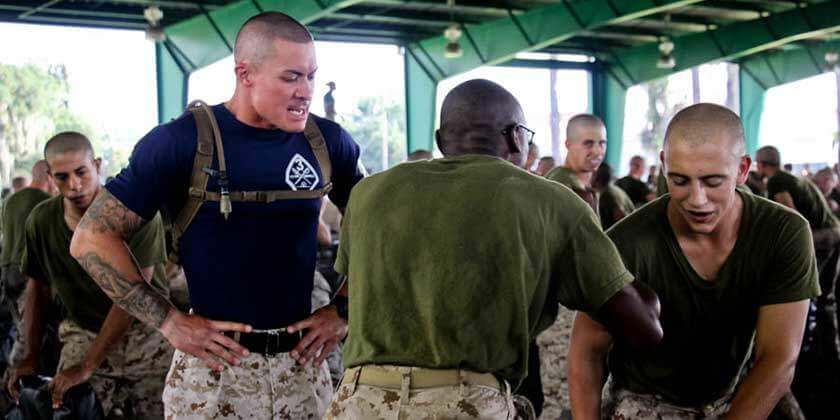
So, with all that in mind, do you think they are going to let some disrespectful kid breeze through training and not earn their Eagle, Globe, and Anchor? Probably not.
It might seem a little harsh, but deep down I think most recruits want it to be tough. They want “Marine Corps Discipline” instilled into them.
To me, recruit training is a rite of passage you have to go through to enter one of the most badass organizations in the world. The pride and bond Marines share stems from our shared misery and long history bringing absolute hell on America’s enemies.
Anyway, in the rest of this article, I’ll let you know what you should expect during each of the phases of Marine Corps Boot Camp.
Quick Navigation: Tell me about…
Here is the Marine Boot Camp Schedule (By Week)
Pre-Boot Camp
At this point in the process, you’re referred to as a “Poolee.” I wasn’t in this phase very long but depending on your age and circumstances this stage can take over a year.
For me, within 3 weeks of first contact with a recruiter I was bald and disoriented sitting on the floor of a non-air-conditioned room at Parris Island chanting “Sir, E0 in the Marine Corps in a recruit, he wears nothing because he is nothing, Sir.”
Wears nothing refers to the rank Marines wear on their uniform; E0 stands for enlisted rank 0, which actually isn’t even a rank, but they want you to get the idea that while you might have been a big shot in the civilian world, now, as an individual you’re nothing.
Anyway, pre-boot camp consists of a series of tests and medical examinations to make sure the Corps isn’t buying a lemon. You’ll have to get a passing score on the ASVAB, which is a military aptitude test to make sure you have to brain power to complete the necessary tasks of your desired Military Occupational Specialty (MOS). If you haven’t taken it yet don’t freak out, it’s just basic math, reading, and science questions.
You’ll also have to go through a Military Entrance Processing Station (MEPS) to ensure you don’t have any preexisting medical conditions that could cause problems later down the road.
I Was Lied to
I wasn’t really lied to, let me explain. When they send you to MEPS for your physical, it’s usually a two-day process. The night before they’ll set you up with a super nice 5-star hotel that has a pool, all you can eat buffet, outdoor basketball court, gym, and all the luxuries you could ever want.
In hindsight, it’s actually pretty funny because they just want to make sure the soon to be recruits don’t back out at the last minute. Just know, once they have you to the point of no return, their tone changes completely.
One second, my name was Kevin, the next I was “this recruit.”
Note Before the Training Schedule: The rest of this article will give you an overview of what to expect, and I did my best to find the exact current basic training schedule. Just know they do change slightly from time to time depending on certain circumstances. If you’re wondering how long is marine boot camp or what to know what happens week by week, check out the training schedules linked below.
I will put links to the most up to date Marine Corps Boot Camp at the bottom of the page. They’re images so I can’t link directly to them. You’ll have to copy the URL and paste it into your browser.
The schedule and experiences shared below are for East Coast training, but I can tell you after looking at the West Coast schedule they’re very similar.
Receiving week (Not a Training Week)
Every recruit is told that there is only one way off the Island, alive at least. You either complete recruit training or you leave in a body bag.
Legend has it that while many recruits have tried, there is no record of a successful escape. The Drill Instructors remind you that any attempt to escape would be futile, as even the best navigator can’t make it out of hell.
For me, receiving week was by far the worst week of training. You don’t do a lot, it’s a lot of just sitting around in the baking South Carolina heat waiting for gear to be issued to you. To an observer, it might not seem too bad, but let me tell you it really sucks.
You aren’t allowed to talk unless it is to chant Marine Corps knowledge. The worst part about it is you never know what will happen next.
The rooms in the buildings have no air conditioning and the walls are totally bare. There are no chairs, you sit Indian Style for basically a week straight. You are not allowed to stretch your legs, although I always had to try to stretch out a little when the drill instructors weren’t looking because I wasn’t flexible and it hurt like hell after a while.
While sitting Indian style seemed pointless at the time, it’s actually incorporated into the training to increase the flexibility of the joints of the lower legs and hip; this makes you more stable and comfortable in the seated shooting position during range week.
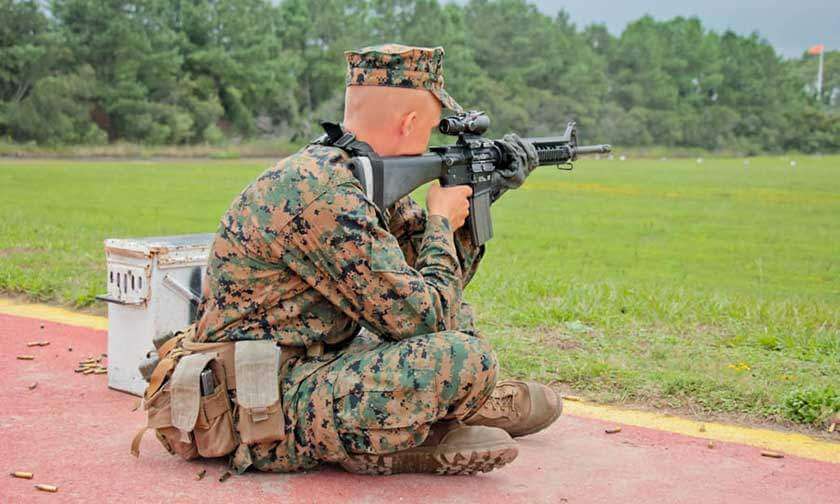
- This image is not during receiving week, just showing a concept here.
Initial Strength Test (IST): During receiving week recruits will have to make basic standards to ensure they are ready to start recruit training.
Phase 1 of Training Schedule
Training week 1: Marks the beginning of actual recruit training. During the first weeks of training, recruits are immersed in the Marine Corps culture, learning basic knowledge, history, rank structure, and customs and courtesies. The major goal of the first phase of training is to break civilian habits and to build discipline into recruits.
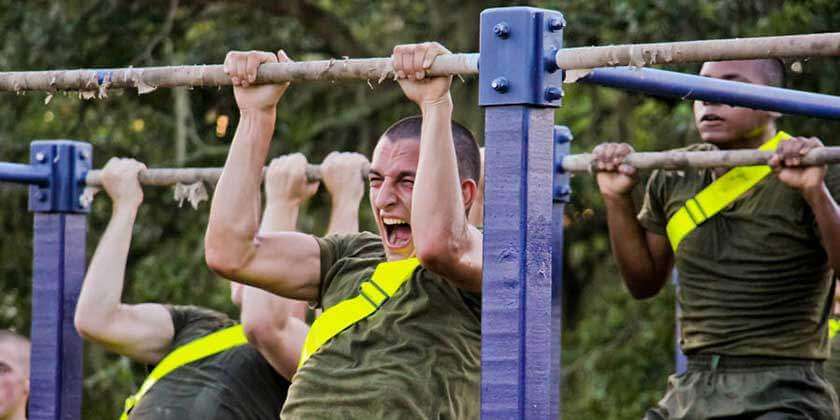
Close Order Drill Basics: Drill is one of the most important components of basic training. Recruits will spend more time practicing close order drill than anything else throughout training.
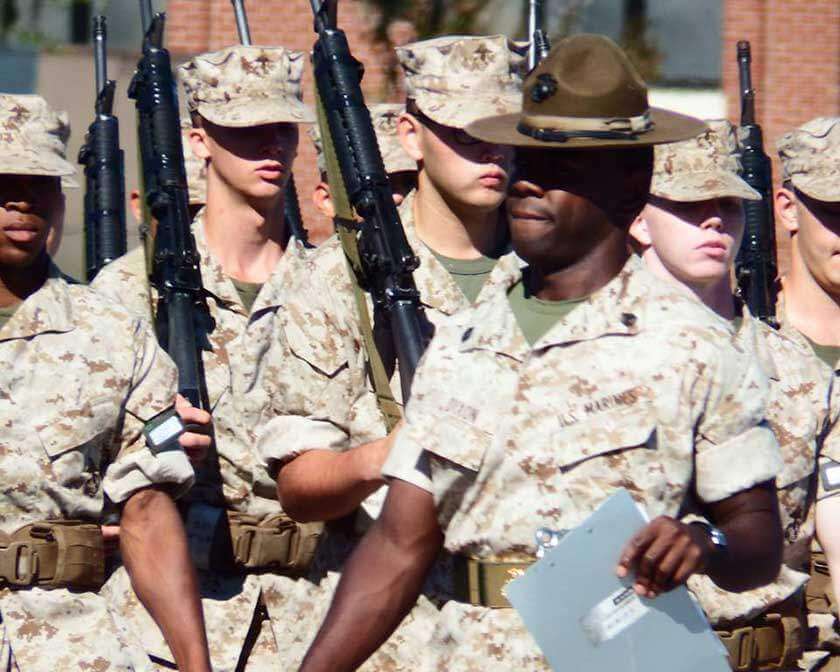
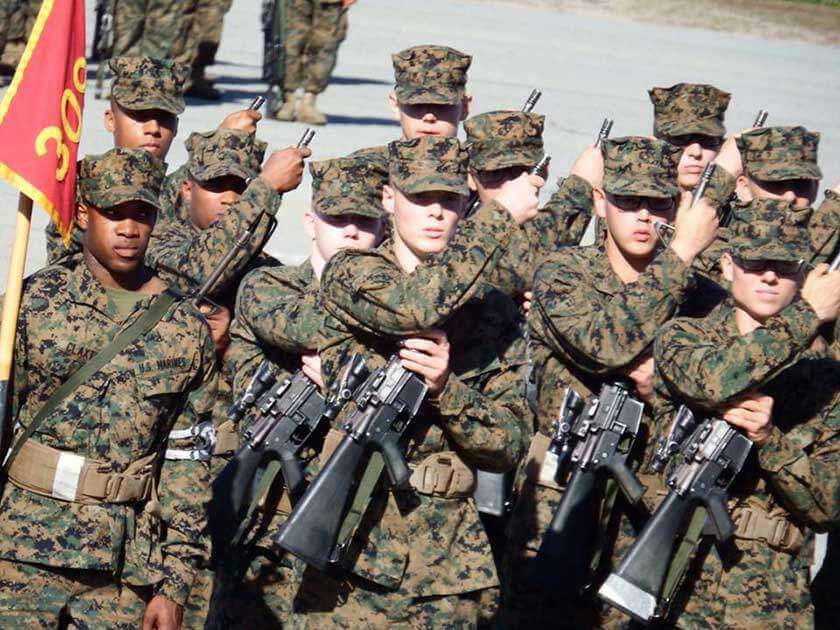
Everywhere they go they go they will be drilling, whether it be to the chow hall or to get fresh hair-cuts.
Drill instructors love to get a lot of drill in because it’s a good way to teach teamwork, instant obedience to orders, discipline, and to be honest, they want to win the drill completions. I remember my Drill Instructor would always say “drill or kill,” meaning if we didn’t give our best effort while drilling we would have to do additional physical training. If we made stupid mistakes we would have to “go find discipline,” which was always far away and we would have to run there as fast as we could. I think you get the idea.
If you want to see some close order drill skip to 32:20 in the video below by the gas chamber section. The recruits in the video as still in phase one (at the initial drill competition) in the video, so they aren’t very good at drill yet.
Intro to Barracks Life: Barracks life can be stressful, recruits will have to make their rack to perfection, stay organized, and clean the barracks. It sounds simple, but cleaning the barracks is an event that can’t be put into words. A lot of times the DIs will get pissed and mess it up on purpose. There will be a “hurricane” and when you come back from chow the entire place may be turned upside down.
A lot of times cleaning is meant to toughen recruits, the Dis will “play games” with recruits, for example, they may have to pick up their racks (beds) and walk in circles with them. The racks are extremely heavy and made of steel, one guy in our platoon got a hernia.
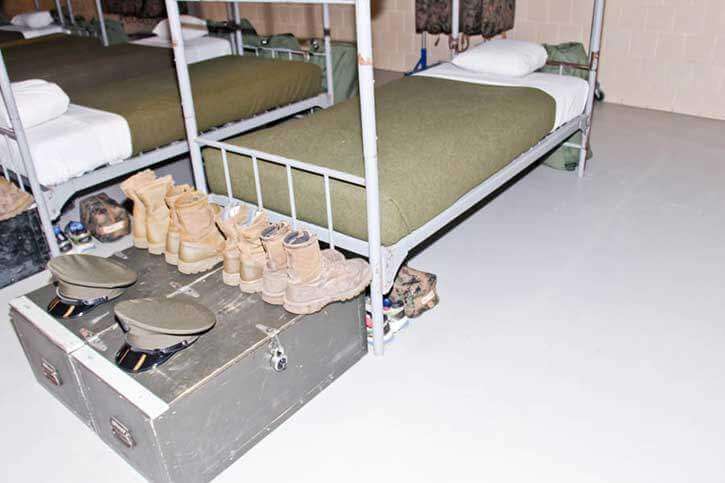
Intro to Core Values: Recruits are mentored by their drill instructors on the core values every Marine must possess. Honor, Courage, and Commitment are core values the Corps doesn’t take lightly.
The Drill Instructors will take recruits through different scenarios and guide them through the thought process they should follow when making decisions. For many, this is a time to reset their moral compass.
Crash Course in Marine Corps History: learning USMC history is an important component of recruit training. When you’re driving around town and see a disproportional amount of Marine Corps stickers compared to other military branches it’s because of the Marine history. Long story short, the Marine Corps has a lot of badass accomplishments.
Training Weeks 2-3: These are some of the hardest weeks of marine boot camp.
Intro to the Obstacle Course: The obstacle course, or O-Course for short, consists of 14 obstacles that simulate obstacles Marines are likely to face in combat. I could write all about it, but I think the following images and this video will sum it up best.
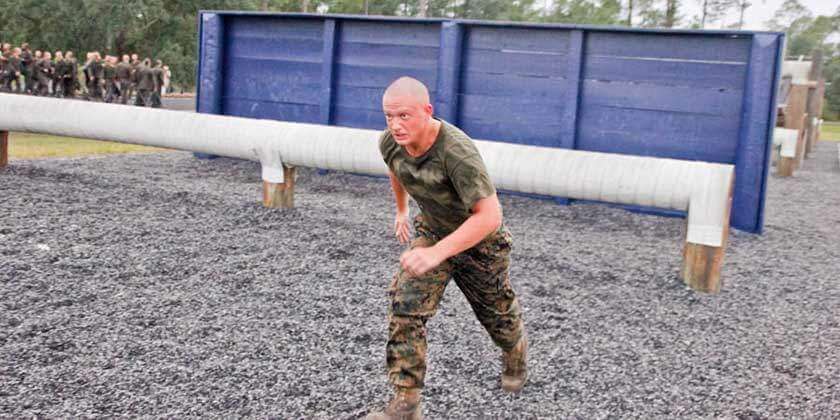
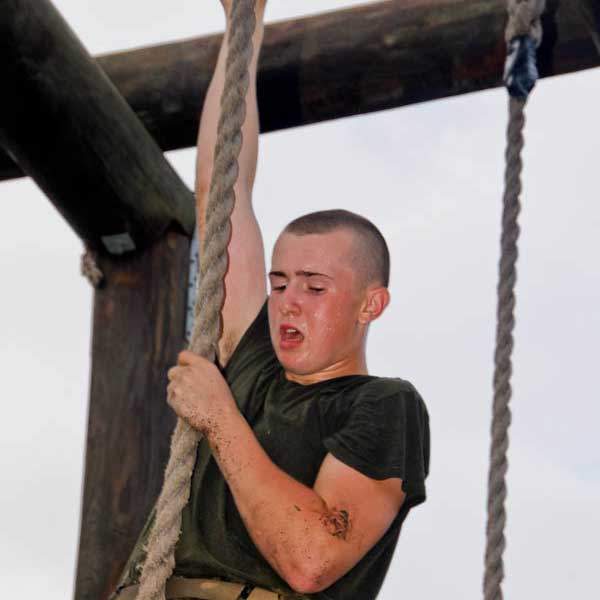
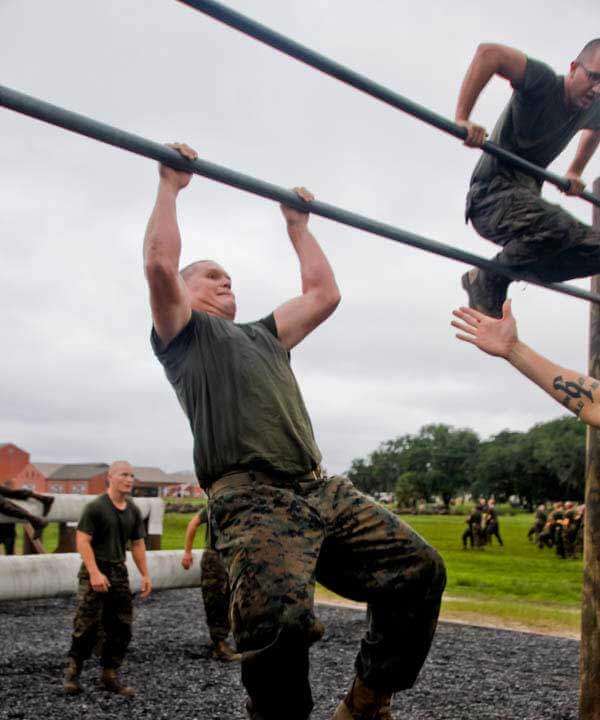
Gas Chamber: This was the worst day of training for me. My M40 Field Mask was way too small for me and didn’t have a good seal, so I pretty much inhaled straight CS gas for a few minutes.
In the video linked above, you can see what the gas chamber is like. You can watch the entire video or skip to 29 minutes in.
[wpsm_video]https://www.youtube.com/watch?v=zOjQge03CwI[/wpsm_video]
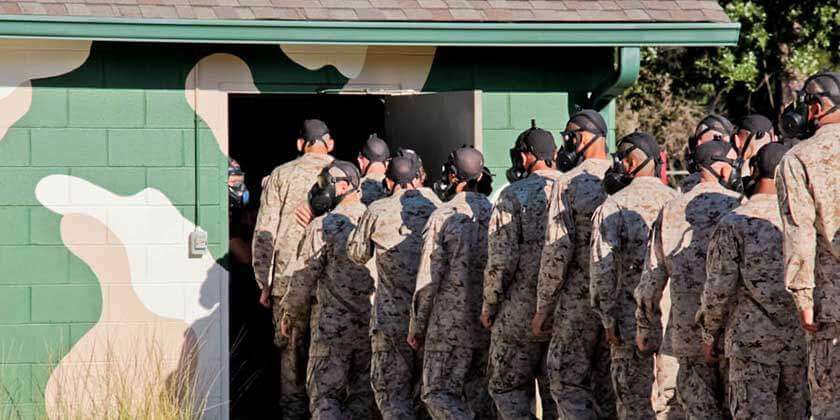
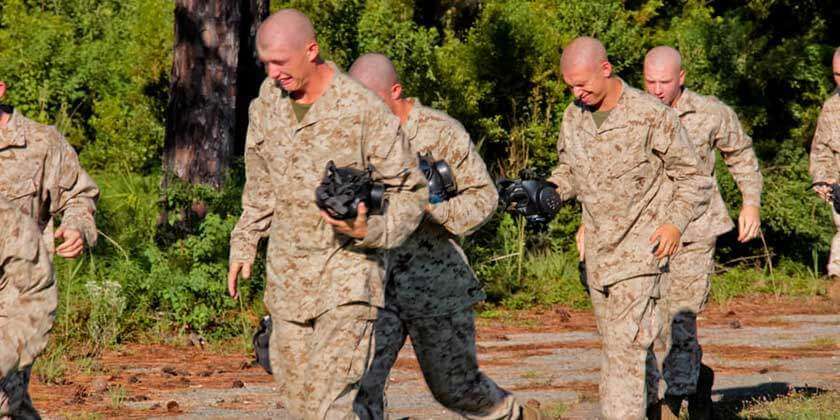
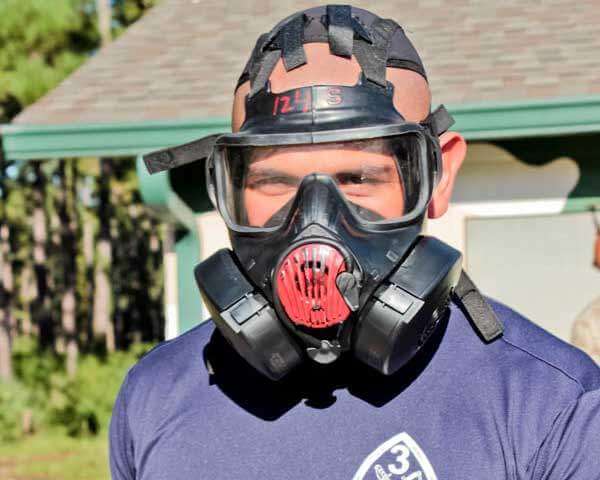
When I realized my mask wasn’t sealing I tried to walk out of the chamber. One of the DIs grabbed me and slammed me against the wall. Now I would never hit a drill instructor, but I actually fought back, It was a survival instinct. When another DI saw what was going on he also came over and pinned me against the wall. I remember thinking I going to black out for sure. Now I don’t pray often, but at that moment I did. This weird peace came over me and I got totally relaxed and came to terms with whatever was going to happen. Long story short I made it out of the chamber alive, obviously.
Rappel Tower: The same day as the gas chamber recruits will learn the basics of rappelling and get a chance to rappel down the iconic USMC tower a few times. Rappelling is pretty simple, and most recruits enjoy it.
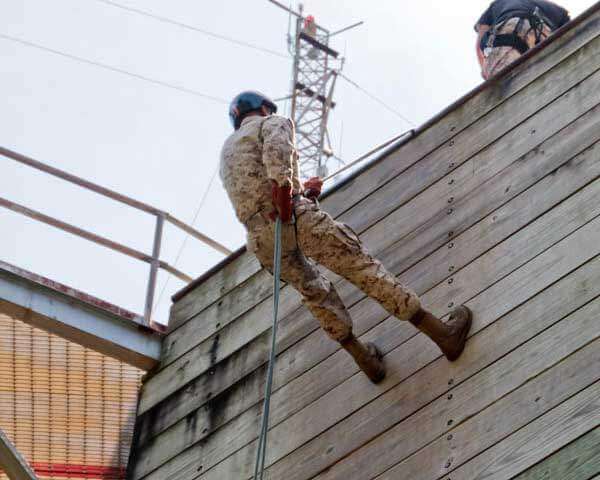
Intro to MCMAP: The Marine Corps Martial Arts Program (MCMAP) is a program that teaches Marines effective close quarter combat techniques. Training includes bayonet techniques, knife combat, hand to hand combat, and other techniques. To be honest, it’s pretty lame, but it’s just the foundations and they will build on their skills when they make it to the fleet.
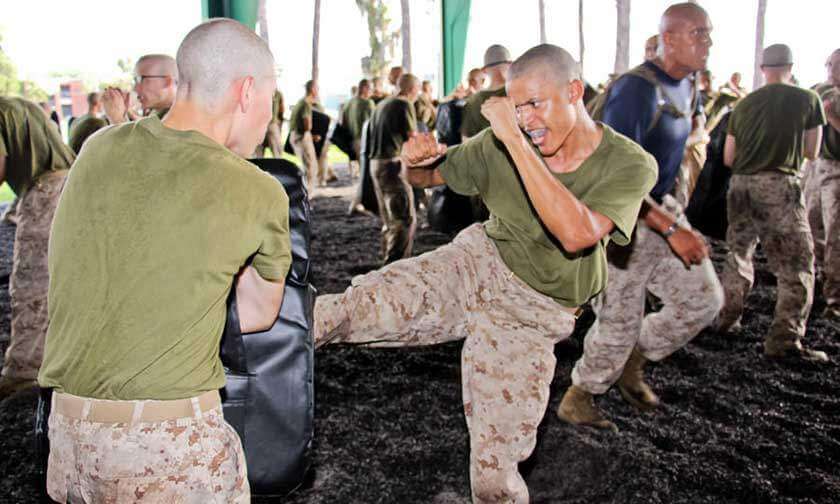
Intro to the CFT and Combat Care: Recruits will learn about the Combat Fitness Test, which is a test used to measure their physical ability to operate in combat. There are 3 main events.
- Maneuver Under Fire In this test recruits will have to low crawl, bear crawl, carry ammo cans around cones, drag a fellow recruit, and carry a fellow recruit on their back for a set distance. This test is pretty short but let me tell you it’s exhausting.
- Movement to Contact: Consists of a timed 880-yard run simulating a scenario where a Marine would have to respond to contact or an order in a hurry.
- Ammo can lifts: Recruits are giving an ammo can and they are tested on how many times they can lift it from their chest to a fully extended position above their head in 2 minutes.
Sundays: On Sundays, recruits are allowed to attend a church service. There are many types of religious services to accommodate the wide array of faiths.
SDI Inspection: Recruits will be inspected and tested on Marine Corps knowledge. They will be asked questions like who is the commandant of the Marine Corps or what the serial number of their M16A2 Service Rifle is. It sounds easy, but with a DI screaming in your face it is a bit stressful. Above all else, they want you to show you can maintain your bearing in a stressful situation.
Phase 2 of Training Schedule
During Phase 2 recruits are introduced to field skills and marksmanship training.
Training Week 4: While week 4 is generally referred to as swim week, there are also some important things that take place during this part of the training.
Initial Drill: Recruits get their first chance to show off what they’ve learned and compete against other platoons. This is a good time for recruits to build comradery as they compete together.
Swim Week Basics: During swim week the instructors will ensure that marines can at least stay afloat and swim short distances. They will also have to jump off a high dive and swim across the pool.
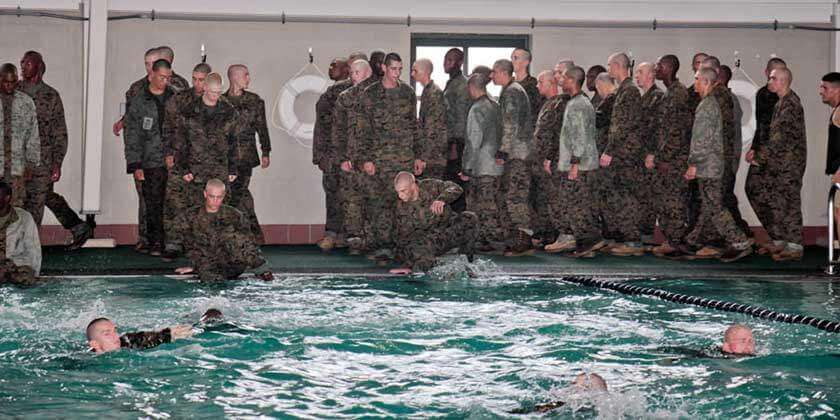
Some recruits can’t even tread water at the start of swim week, so they will be called “Iron Ducks” and sent for remedial training before they can continue with training.
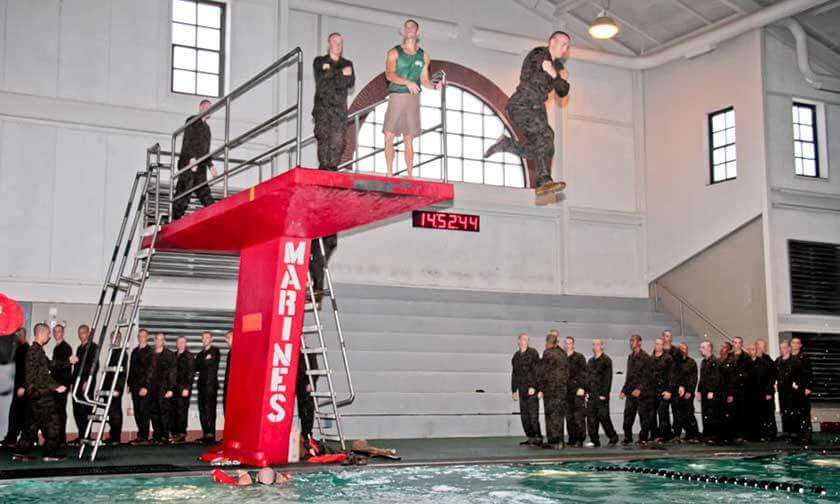
There was no one in my class that got dropped for failing swim week. Worst case scenario recruits are pushed back a week and spend more time with instructors learning swim basics.
Drop gear underwater: Being able to drop your gear underwater is important. Most people have seen the movie Saving Private Ryan. In the opening scene as they are storming the beaches of Normandy you can see why it’s important to be able to drop your gear.
Many US troops died during the D-Day invasions because they were forced to jump into the water before hitting the beaches. It’s impossible to swim wearing a flak jacket and full kit, so drill instructors ensure recruits are able to ditch their gear under water before continuing with training.
Training Week 5: Week 5 is team week, it’s probably the easiest week of training. Recruits will be assigned a task around the base. For example, one day I was doing laundry, a couple of others I was building targets for the rifle range, and another day I was mowing grass.
Initial Written Tests: Recruits will be tested to ensure they have been paying attention and retaining what they’re being taught.
10k hike: Hiking is a must for Marines, it’s our primary means of transportation. A 10k hike ensures marines have the mental toughness to continue on with training.
Recruit Photos: This one is self-explanatory, but what you don’t know is for the dress blue photos marines are only wearing a one-sided shirt that only goes down to their belly button. There is no time in training to get fully dressed.
Bayonet Assault Course: This was one of my favorite days/events in training. It was September 11th, and after a fiery speech from a combat instructor, I can tell you those dummy targets got the absolute shit kicked out of them.
The bayonet course is just one station in a series of events we did that day. While recruits wait to complete the bayonet course they’ll be fighting with Pugil sticks, sparring, and practicing other Martial Arts techniques.
Training Week 6: Grass week. You’ll hike to the rifle range and begin to learn the fundamentals of marksmanship and the different firing positions.
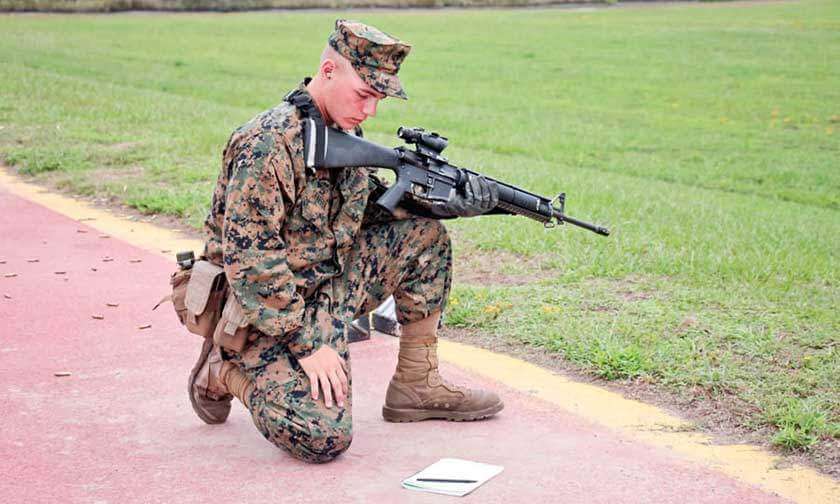
During grass week Drill Instructors are asked to take a step back and let the recruits relax. Each platoon is assigned a marksmanship instructor who will teach them the basics of shooting and weapon safety.
Grass week isn’t too bad, it does get boring at times and they’ll make you stay in uncomfortable positions for long periods of time but compared to other weeks of training it’s fairly easy.
Grass week sucked for my platoon because it was cold and raining. So we had to snap in on targets for hours and hours in the cold rain.
Training Week 7: Firing week!
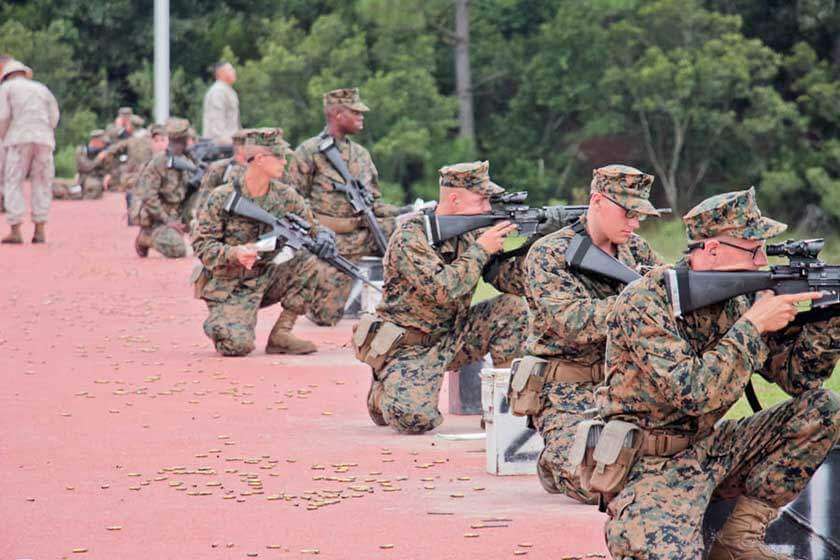
By far the most fun week of training. Recruits fire their M16-A4 rifles in the standing, sitting, and kneeling positions from various ranges including 100, 200, and 500 meters.
The week is capped off with a 12k hike.
Phase 3 of Training Schedule
Training Week 8: During week 8 recruits go through what is called basic warrior training and complete table two
Table Two Qualification: Table two focuses on close range shooting with their gear on.
Basic Warrior Training: There are a number of events that build toughness. Recruits practice the basics of patrolling and other important infantry tactics.
Training Weeks 9: Week 9 is sometimes referred to as Testing Week
Final CFT: Recruits do another combat fitness test, this allows them to see if they have increased their combat fitness.
Final PFT: The final physical fitness test includes a 3-mile timed run, max pull ups test, and sit-ups test.
Final Written Tests: Recruits are tested on Marine Corps knowledge to ensure they know enough to move onto the operating forces after they complete boot camp.
Training Week 10: Week 10 is a big week that includes final testing. Final testing week is big because depending on how each platoon scores as a group will affect how they are ranked against other platoons. Whichever platoon ranks best overall will win the honor platoon award at graduation.
The Crucible: A 54-hour culminating event that incorporates all the skills they have learned throughout the training. There will be teambuilding events and other events that are modeled after famous Marine Corps battles. Recruits have limited food rations and won’t be getting much sleep during the crucible.
The hike back from the crucible really sucked for me. I remember being so tired that I could barely stay awake while hiking. My body wasn’t beat up too bad, I was just so tired and sleep deprived.
Earning the Title: Once recruits finish the 15k hike back from the crucible they are handed their Eagle Globe and Anchor and are officially marines. Most of the recruits cry when they are handed their EGA.
Warriors Breakfast: After the ceremony Marines get a well earned all you can eat breakfast. A lot of guys ate so much they were throwing up afterward.
Phase 4 of Training Schedule
Training Weeks 11-12: This is the last chance for DIs to mentor their marines and to prepare the new marines for their future careers. There is less supervision and things are a little more laid back.
Battalion Commander Inspection:

-
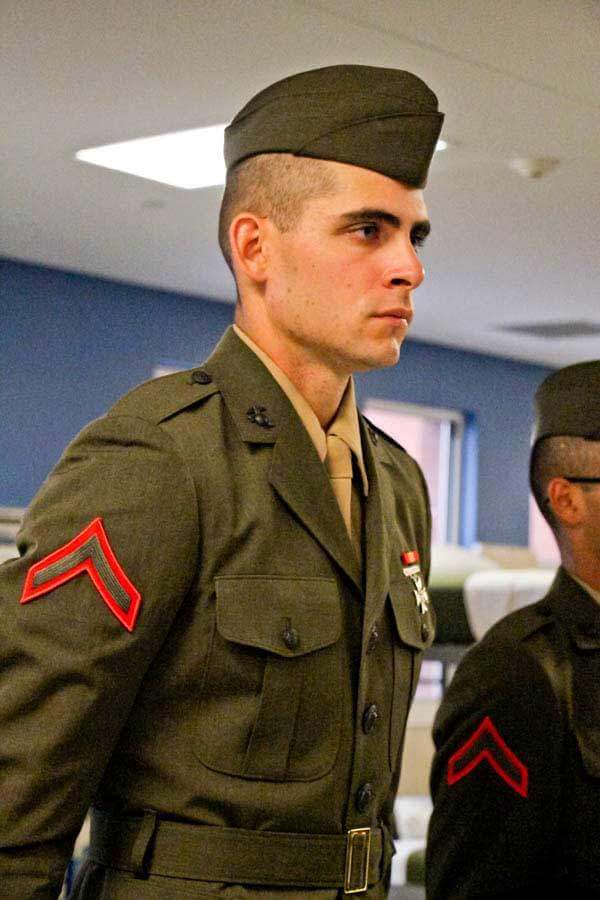
This is a picture of me during inspection
Final Takeaways from Training: Squad leadership discussions, Force fitness, Platoon Photos, Equipment De-Issue, Marine Corps Relief Society and other information to prep them for their future careers.
Admin tasks and preparation for the graduation ceremony.
Final Thoughts
USMC boot camp is no joke. If this page helped you understand what Marine boot camp is like.
Here are the links to the most up to date schedules. As mentioned, since they’re images I can’t link directly to them. To open them, just copy and paste them into your browser.
You can see a snapshot of the west coast training schedule here: https://www.mcrdsd.marines.mil/Portals/3/Recruit%20training%20%20Matrix%20Online.jpg?ver=2017-12-20-113713-780
You can see a snapshot of the east coast training schedule here: https://www.mcrdpi.marines.mil/Recruit-Training/Recruit-Training-Matrix/
If this page helped you or you have any questions let me know in the comments! It’s always good to hear from you.

Semper Fi, I’m glad you enjoyed it!
Thank you for taking the time to write this article. There are many resources available to learn about USMC boot camp, but each one has its own unique perspective, and will include things the other ones don’t. It is also helpful to have a very up-to-date description. My son is on day F2 (first Saturday) of his recruit training in San Diego, where his father also became a Marine. Semper Fi!!
My grandson is in Parris Island as we speak. This is exactly the info I wanted to know what he’s going through from someone who’s gone through it! He’s in third week now. And he’s not real happy at the moment! Good to know some of the weeks will be a little easier. I’m writing letters daily, to encourage him. I’d love to send him this whole article, but I’m gonna make sure it’s ok to do that before I send it. Thank you for your service and thank you for this article! God Bless you!